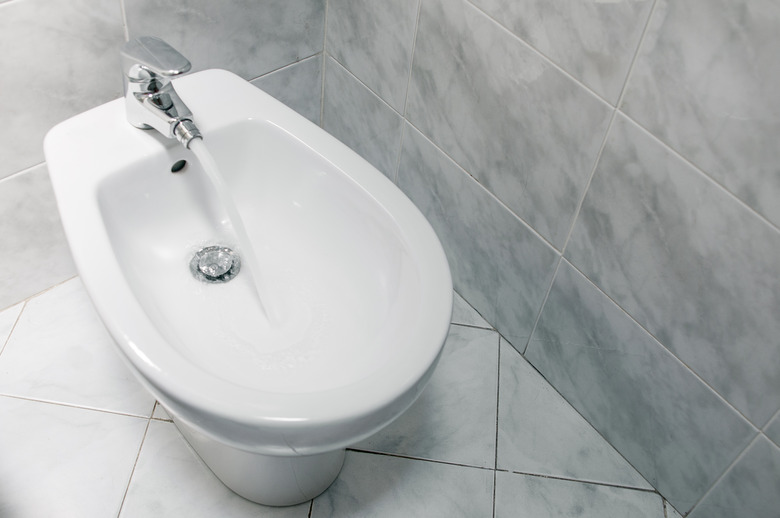What Is The Difference Between American And European Toilets?
If you've ever traveled in Europe, you may have encountered some unexpected differences in both public and private bathrooms. European toilets differ from American-style toilets in terms of size, flush performance and built-in amenities.
Even the terminology is different — in Europe, the term "toilet" is more closely coordinated to the American term "bathroom" in that it encompasses all elements of the room. Understanding the differences between American and European toilets can prepare you for your overseas adventure and help prevent any bathroom confusion.
Tip
Differences between American and European toilets may include size, flushing mechanism and post-use cleansing method.
Types of European Toilets
Though most American toilets are recognizable across state lines, not all areas of Europe feature the same standard design when it comes to toilets. In most major European cities, you'll likely find public toilets that are similar to American toilets in terms of their design. These toilets feature a toilet seat, flushing mechanism and method of cleaning yourself, either by bidet or toilet paper.
In smaller European villages or residential areas, however, you may find a squat toilet. Squat toilets are essentially holes in the ground or floor that are covered by a flat platform for placing your feet. Instead of sitting, you're expect to squat over the hole while going to the bathroom. Though some modern squat toilets feature a flushing mechanism, others require you to pour water down the hole using a provided bucket.
Types of Flush Performance
Different types of toilets vary in their flushing mechanisms. Most American toilets use siphoning or sucking action to forcibly draw the used toilet water through the toilet trap and into the attached sewer plumbing. The neck of the toilet hole is small enough to facilitate suction, a design choice that often necessitates the use of a plunger in the case of a clog.
European toilets typically utilize a wash-down flushing system in which water inside the toilet is forced out through water flowing from the rim of the bowl. The neck of the toilet hole tends to be larger so there is less of a chance of clogs, but the bowls may require more frequent cleaning from any leftover residue.
Different Flushing Mechanisms
Flushing mechanisms also serve as a distinction between American and European toilets. Typical American toilets flush with a single handle mounted on the side of the toilet tank. Older European toilets may flush using a pull chain mounted above the toilet. Newer European toilets feature a dual-flush mechanism.
Dual flush toilets feature two flush buttons mounted on the tank or nearby wall of the toilet. Pressing one button uses less water and force than pressing both, which is usually reserved for times when there is a significant amount of waste in the bowl. Dual flush toilets are valued in Europe because they positively impact water conservation efforts as users can opt for a single-flush rather than a full-flush.
Sanitation and Design
American toilets are traditionally accessorized with free-standing or mounted stations for dispensing toilet paper intended for cleansing after using the toilet. The toilets and sewer systems are designed to handle the capacity of the additional paper. European toilets may offer toilet paper, though it is not the preferred method of cleaning.
In Europe, bidets are offered as a post-use cleaning option. Bidets are traditionally additional structures that resemble a pedestal urinal mounted next to the toilet. After using the toilet, you squat over the bidet and press a button that releases a gentle stream of water to clean you.
Modern bidets may be built directly into the rim of the toilet seat so no additional mounted structures are necessary. A bidet toilet attachment that's not a permanent add-on is another option. Bidets are not intended to receive waste, including paper, but rather act as compact showers for backside cleaning.
